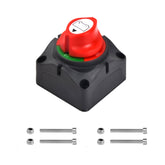- Thermal Breaker: This device protects your electrical equipment from damage caused by overloads and short circuits. It operates by sensing excessive heat generated by high current flow and automatically trips to open the circuit.
- Differential Breaker (RCD): An RCD is a critical safety device that protects people from electric shock and prevents fires caused by current leakage. It works by detecting an imbalance in current and is typically used in AC (alternating current) systems.
Marine Thermal Circuit Breaker with LED Indicator – 60A to 300A
Reliable protection in DC 12V / 24V / 48V
This single-pole thermal circuit breaker with an LED indicator effectively protects your DC electrical circuits against overcurrent and short circuits. With a manual reset and IP66 sealing, it is purpose-built to secure your marine electrical installation and safeguard your electrical equipment from failures.
Operation and benefits
Automatic protection principle
When an overcurrent is detected, the automatic trip instantly cuts power. The integrated LED on the button then lights up, clearly indicating the open state. Reset is performed manually via the accessible reset button.
LED visual indicator (ON/OFF)
- LED off: circuit active, normal operation
- LED on: breaker tripped, circuit open
- Reset button: manual circuit restoration
Reinforced marine construction
- Stainless-steel studs M6 or M10 depending on amperage
- IP66 sealing: protection against fresh and salt water
- Operating temperature: −32°C to +82°C
- Ignition Protect ISO 8846: suitable for gasoline engine compartments
Recommended onboard applications by amperage
| Amperage | Voltage | Main applications | Model |
|---|---|---|---|
| 60A | 12V/24V | 600W inverters, upstream protection for switch panels, residential solar systems, 12V cooktops, high-power LED lighting | CBL60 |
| 120A | 12V/24V | 12V windlass, medium bilge pumps, 1500W inverters, RV auxiliary systems, medium electrical appliances | CBL120 |
| 200A | 12V/24V | 24V electric winch, industrial bilge pumps, solar arrays with high-power inverter, heavy-duty electrical equipment | CBL200 |
| 250A | 12V/24V | 24V bow thruster, hydraulic swim platform, industrial winching systems | CBL250 |
| 300A | 12V/24V/48V | 48V bow thruster, 48V solar battery-inverter systems, naval hydraulic equipment | CBL300 |
Installation versatility
Usage environments
- Pleasure boats: bilge, engine compartment, switch panel
- Professional vessels: marine industrial installations
- RVs and 4×4 vehicles: high-current auxiliary circuits
- Solar installations: protection between batteries and inverters
- Mobile equipment: platforms, construction machinery
Comparison with other protections
Thermal breaker vs. battery switch – A battery switch requires preventive manual action, whereas a thermal breaker trips automatically during overcurrent and provides LED visual diagnostics.
Thermal breaker vs. RCD – An RCD protects people against leakage currents in single-phase 230V AC systems, while this single-pole thermal breaker protects equipment against overloads in 12/24/48V DC.
Thermal breaker vs. contactor – A contactor remotely opens/closes a circuit; a thermal breaker automatically protects against overcurrent with local manual reset.
Thermal breaker vs. fuse – Unlike a fuse that melts, the breaker is manually reset with no part replacement. Cost-effective and practical at sea.
Why choose this thermal breaker
Enhanced safety
Automatic overload protection with immediate visual feedback. Ideal for unattended or hard-to-reach areas such as bilge compartments.
Marine-grade reliability
IP66 waterproof build with corrosion-resistant stainless studs. Designed for the harshest marine environments.
Ease of use
Simple push-button reset, LED diagnostics, quick drop-in to existing circuits.
Operating economy
No consumable parts unlike fuses. Quick intervention after a trip.
Complementary products
Flush-mount version available: For seamless panel integration, see our LED thermal breaker 60A–300A (flush mount) with the same performance.
Compact versions: For tight spaces, check our mini thermal breakers 30–60A, surface-mount or flush (no LED).
Professional protection for marine and industrial installations — Available from 60A to 300A
|
Ref. |
CBL60 |
CBL120 |
CBL200 |
CBL250 |
CBL300 |
|
Voltage |
12–48 VDC |
||||
|
Current rating |
60A |
120A |
200A |
250A |
300A |
|
Mounting |
Surface mount |
||||
|
Stud size |
M6 |
M10 |
|||
|
Torque |
11.3 Nm |
17 Nm |
|||
|
Interrupt capacity |
3.5 kA @ 48V — 5 kA @ 18V |
||||
|
Operating temperature |
−32°C to 82°C |
||||
|
Class |
Manual reset T3 48V ≤ 150A 24V ≤ 200A 12V ≤ 300A |
||||
|
Size |
74 × 48.4 × 46 mm |
||||
|
Center distance |
57 mm |
||||
|
Weight |
69 g |
69 g |
103 g |
103 g |
103 g |
|
Waterproof |
IP66 |
||||
|
Warranty |
1 year |
||||
How to use :
Link to the blog
Discover tips, tricks, and detailed instructions on using our product in our dedicated blog post. Learn about setup, operation, and optimization to get the most out of your purchase.
Link to the blog
Frequently Asked Question
Our Recommendations
Thermal Circuit Breaker 60A-300A with LED | Panel Mount
- From 23.50€
- From 23.50€
- Unit price
- per
Compact Battery Switch 50A / 100A / 200A / 300A
- From 8.50€
- From 8.50€
- Unit price
- per
Marine Bus Bar 6 Studs M6
- 20.18€
- 20.18€
- Unit price
- per
Heavy-Duty Marine Battery Switch (350A/600A)
- From 29.00€
- From 29.00€
- Unit price
- per
High-Amp Marine Bus Bar 4 Studs M8 - Black
- 28.00€
- 28.00€
- Unit price
- per
Marine Battery Selector 1-2-Both-Off - 275A 12/48V
- 15.20€
- 15.20€
- Unit price
- per
- Choosing a selection results in a full page refresh.
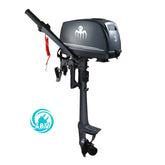
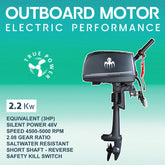
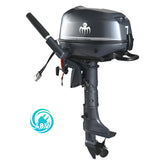
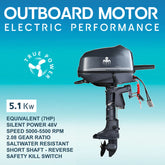
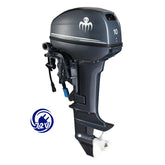
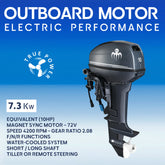






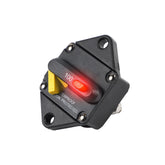

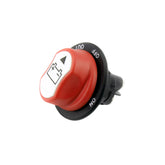





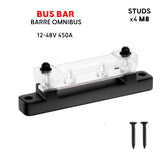
![Barrette de distribution omnibus marine haute intensité Baywatt - 4 goujons M8 (noir) - Organise et distribue l'alimentation du bateau Seawatt High-Amp Marine Bus Bar - 4 M8 Studs (Black) - Organizes & Distributes Boat Power] Baywatt.com](http://www.baywatt.com/cdn/shop/files/BB4PM8-2_165x.jpg?v=1736955784)
